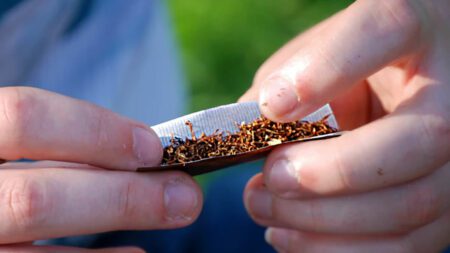Finland is preparing to enforce a strict ban on flavored nicotine pouches, allowing only menthol and mint flavors, in a move that has sparked controversy among tobacco harm reduction (THR) experts. The decision comes as neighboring countries Sweden and Norway continue to achieve impressive results in reducing smoking rates through the promotion of safer nicotine alternatives like snus and nicotine pouches.
Reclassification and Proposed Regulations
In April 2023, the Finnish Medicines Agency (Fimea) reclassified nicotine pouches as consumer goods, bringing them under the Tobacco Act and Chemicals Act. This change has enabled the government to propose tighter controls on the sale, marketing, and distribution of these products.
The revised legislation, proposed by the Finnish Ministry of Health, aims to regulate nicotine pouches similarly to traditional tobacco products. The restrictive measures include:
- A ban on all flavored nicotine pouches except menthol and mint
- A maximum nicotine limit of 16.6mg/g per pouch
- Uniform packaging with mandatory health warnings
- Prohibition of sales to minors both online and in retail outlets
Controversy and Revisions
The initial version of the bill, approved by parliament in October 2023, allowed additional flavors like tea, ginger, rosemary, and wood. However, allegations of a local nicotine pouch manufacturer leveraging government connections to favor its product lineup led to a revision of the proposal, limiting permissible flavors to menthol and mint only.
Aim and Potential Impact
The Finnish government claims that the bill is designed to prevent youth use of nicotine pouches, curb illegal imports and black market trade, and combat organized crime linked to unregulated nicotine sales. However, THR experts argue that such harsh restrictions often have the opposite effect, as demonstrated by real-world data.
Contrasting Approaches: Sweden and Norway's Success
In Sweden, a recent study published in BMJ Open highlights a significant shift in nicotine consumption trends over the past few decades. Between 1986 and 2022, cigarette smoking declined sharply, while the use of snus, a precursor to nicotine pouches, rose steeply. By 2022, only 4.9% of men and 9.7% of women were smokers, while approximately one in 3.8 men and one in 7.7 women were using snus.
Similarly, Norway has witnessed a dramatic decline in cigarette consumption, largely attributed to the growing popularity of snus. According to Statistics Norway, the country's daily smoking rate among people aged 16-74 dropped to just 7% in 2023, while daily snus use surged, reaching 16%.
The Path to Becoming Smoke-Free
In November 2024, Sweden achieved a milestone by being very close to becoming the world's first officially recognized "smoke-free" country, with smoking rates set to fall below the World Health Organization's threshold of 5%. The Swedish government attributes this success to its harm-reduction strategy, which promotes safer nicotine alternatives over traditional cigarette smoking.
Concerns and Pending Approval
If approved, Finland's nicotine pouch flavor ban will mark one of the strictest regulatory frameworks in Europe. THR experts and advocates warn that such excessive restrictions could undermine smoking cessation efforts and push users towards more harmful products or the illicit market. The bill's final approval is pending parliamentary approval, with implementation likely to begin in March 2025.
As the debate surrounding the regulation of nicotine pouches continues, the contrasting approaches taken by Finland and its neighbors, Sweden and Norway, serve as a reminder of the ongoing challenges in balancing public health concerns with effective harm reduction strategies.








